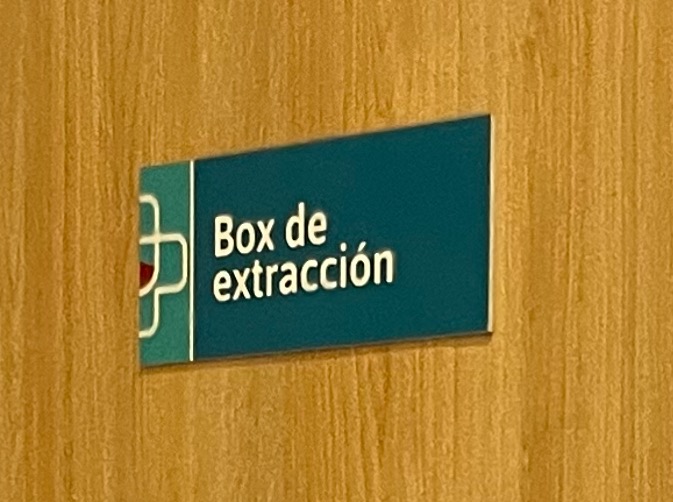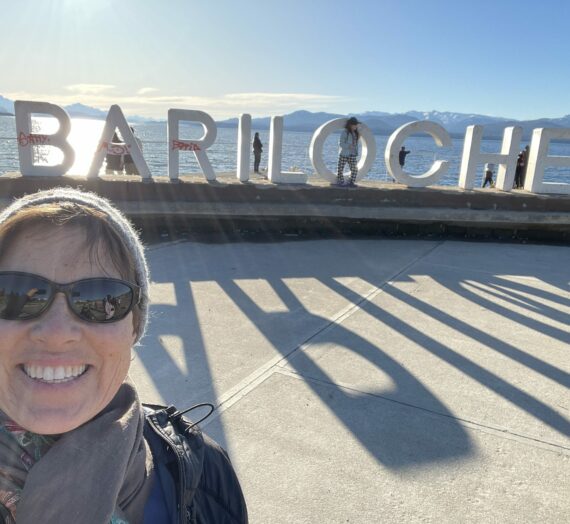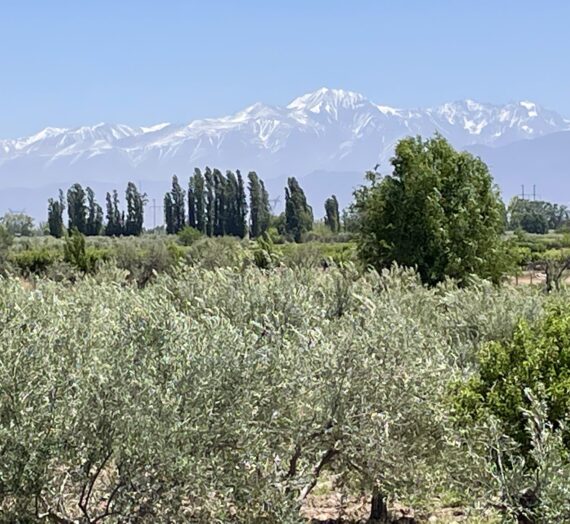One of the first questions friends and family ask me while living abroad is “How do you manage your health?” This question comes in many forms, often stated more simply, “What if you get sick?” or “What if you need a doctor?”

For those of you who don’t live or travel regularly outside of the US, fear of managing your own health care is a very scary prospect. It is easy to wonder, how would someone manage their health without a very expensive health care insurance plan and a full-time job with benefits that pays for some of those exorbitant medical bills that will inevitably occur? But for those who have traveled and experienced life outside of the US, you’re probably smiling with the knowledge, that yes, in fact, there are many modern and more convenient options for managing one’s health outside of the US. In this post, I’d simply like to share with you my experience receiving medical care in the South American counties in which I’ve lived.
First, it is important for me to say, while I lived in Ecuador and Colombia, I worked for institutions who provided full medical care for me including regular check-ups with general medicine doctors, dentists, gynecologists, and dermatologists when I asked. All of these health care providers were in private practice and gave me excellent service, thoroughly answering all of my questions- often in English. Furthermore, their examination methods and scanning equipment were sometimes more advanced and thorough than what I have seen in the United States.
While traveling on my own around Mexico, Chile and Argentina, I paid for a “traveler’s insurance plan”, which basically covered an emergency evacuation back to the US if something really bad happened along my journey. I admit, now that I’ve settled down for a while, I’ve let that policy lapse, and I am currently taking a risk of living without health insurance. Before you collectively gasp (!), let me explain why that’s not as bad as it sounds.
First, I work hard to be healthy. I eat well. I exercise and do strength training almost every day. I pay close attention to my body and how it’s feeling. If something feels off, I try to be proactive to do something about it before it can get worse.

Second, living without health insurance doesn’t mean that I don’t go to the doctor. Each year in my travels, I have made sure that I get a full physical and gynecological exam. I get all my vaccines. I also get all the blood tests and scans that are recommended for women my age- which often include more exams than US insurance providers will pay for. Therefore, in some ways, the health care I am receiving is even more thorough than in the US.
How do I do this? I ask locals for a doctor recommendation or I search online for patient reviews. I also use Facebook groups of other expats living abroad to find out which doctors in the area take new patients and accept payment in cash. All the countries in which I have lived have some sort of socialized medical care, therefore locals pay only a small fee to be seen. It is common and accepted that people who do not pay taxes, or aren’t permanent residents of these countries, pay significantly more for exams and visits with the doctors. But at the prices they are charging, I’m happy to pay!
Here are some examples of what I have paid out of pocket for medical services over the last three years:
| Service Provided | Cost Translated into US Dollars at Time of Service |
| Dental Check-up (Ecuador) | $50.00 |
| Dentist (Argentina) | $18.00 |
| Traumatologist, for my injured hip (Argentina) | $30.00 |
| X-Ray of my hips (Argentina) | $16.00 |
| Physical Therapists (Argentina) | Between $3.00 – $12.00 per one-hour session |
| Physical Therapists (Chile) | $25.00 for 45 minute session |
| Gynecologist Exam which included a full exam and ultrasound (Argentina) | $31.00 |
| Mammogram (Argentina) | $22.00 |
| Bone Density Scan (Argentina) | $14.00 |
| Full Panel Blood Tests (Argentina) | $17.00 |
| Flu Shot (Argentina) | $12.00 |
| Contact Lenses, 1-year supply, same brand I use in US (Argentina) | $120.00 |
| Annual supply of prescription medicine which I can buy over the counter without a prescription (Ecuador) | $30.00 |
Obviously, saving money on my medical needs is a huge benefit of living in South America. This is why you hear of people heading to Mexico or other South American countries to obtain medicine, or to have an operation. I remember once asking a doctor in Ecuador (completely out of curiosity) for the price of a MRI. $100 was his answer. Clearly, the prices of medical care in the US are out of control, and I learned a long time ago that I didn’t need to pay into that system in order to get quality health care.

Another benefit of the local health care system is its efficiency. In Argentina, when I went to the local gynecologist, she wrote me a prescription for the imaging lab to get my mammogram. Then, she asked me what else I needed and suggested other tests that are common for women my age. She gave me prescriptions for those and told me which labs in town would take cash.
I took a bus to the lab, they had an opening immediately, and I didn’t even have time to sit in the waiting room before they called me directly into the scanning room. Now agreed, this wasn’t some posh set-up with soft lighting, and silk pink gowns. It was a basic room, with a machine and no gown. The very pleasant radiologist instructed me to take off my clothes, hang them on the hooks and get into position for the scans. A few minutes later, she was finished with two different types of scans, I redressed and left.
The following week, I returned for a file which held my x-rays and a literal portfolio with detailed descriptions of all that the radiologist noted, in comparison to baselines for family history, age, weight, etc. So other than the inconvenience of carrying around my own x-rays and scans as I travel, I like that I’m completely in control of my medical history and can carry it from doctor to doctor as I wish.

In Colombia, I went to a dermatologist with worries about a mole. He decided it was benign, zapped it off and I was out of his office within 25 minutes. Often, private practice doctors have scanning and x-ray equipment right in their office. Here in Argentina, when I went to the traumatologist for my hip muscle injury, the doctor sent me across the hall to have an x-ray, and then he called me back into his office about 20 minutes later after the radiologist had read the scan and emailed him the results (from across the hall). Therefore, he could prescribe treatment to begin immediately.
The lack of bureaucracy, complicated scheduling with different specialists, and all the steps to protect privacy is so refreshing! And of course, if I stayed in one place long enough, I could develop an ongoing relationship with a doctor to get more consistent and continual care.
That said, I have had a couple marginal experiences. While dealing with my hip injury, I sought out the care of several different physical therapists in Argentina and Chile. All the therapists were excellent, but sometimes their work-ethic (and the lack of concern over privacy) was a little different than what I’m used to. For example, some therapists would use one hand to massage the sore muscles, and the other hand to scroll their social media accounts on their phone. Or, another therapist would come into the room to chat and sit on the table where I was laying- PANTS OFF- to watch YouTube videos, which of course distracted the therapist who was working on me. It really was so ridiculous, I just had to laugh.



Pablo is my favorite physical therapist in Bariloche. He performs magical massages at one end of his studio while overseeing his clients exercise their muscles using various contraptions and weights in his small workout center.
One final point I want to make is very important to consider. In a socialized health care system, there are often two choices of medical care for the locals: public or private. In Ecuador, I asked a lot of questions about the difference between these two entities. The answers I generally received were that the public system had longer waiting periods for scheduling an appointment with a specialist or having surgery. And although the perception was that paying out of pocket for private care was better in quality, I never heard any facts that actually supported that. That said, Peace Corps always paid for private doctors for me, so I never got to see what the alternative looked like.

Here in Argentina, when I was looking for solutions for my hip ailment, I did limp into the public hospital. It was not unclean or unorganized, it just wasn’t very nice (think peeling paint and low lighting). The admitting nurse did get me in to see a doctor right away, but the doctor was fairly dismissive of my injury. She could see that I was in extreme pain, but diagnosed it as a pulled muscle and told me I should rest. I got the impression that she was really busy seeing patients everyday with far more serious problems. But as I was leaving, she did encourage me to go to a specialist in traumatology and pay out-of-pocket at a private clinic, which I did. I have the means and the privilege to be able to do that. Not all locals have this ability.
So far I have been able to obtain really good health care and manage all my needs in efficient and low cost ways. Clearly, my situation may change in the future, but for now, I can report that I’m happy, healthy and hiking again. Thank you for your concern!




Andrea Scharf
thanks for this informative post! Even if I never need health care in another country, it provides a startling perspective on the absurdities of the US health care “so-called” system!
Stephanie
Very interesting Becky, thanks for being so candid about your experience with different treatments, etc. Hope your hip is in good shape now! Lots of love, Stephanie